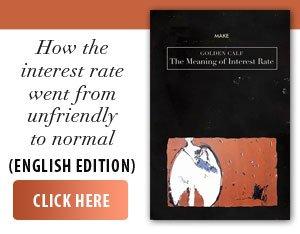The situation in our country, before the elections of May 18, is creating tension in society. Promises are being made, scenarios are being floated that are meant to create panic, and the impression is that we are on the edge of an abyss. In this apocalyptic chorus, an aria is increasingly being interpreted as an example meant to scare: the crisis in Greece. From open sources (reports from the IMF, ECB and European Commission, analyses from The Economist, Financial Times, Reuters, BBC, Al Jazeera) we have extracted data to provide a brief picture of what happened in Greece.
In August 2018, Greece officially exited its third financial assistance program, marking the end of an eight-year period of deep recession - the longest ever recorded in a country in peacetime. However, in reality, the country remained under strict European monitoring for a long time. The European Commission has been reviewing Greece's budget deficit and debt sustainability twice a year until 2022. During these difficult years, Greeks have paid a huge price. Public sector salaries have been cut by over 40%, pensions have been slashed 23 times, and over 400,000 people have left the country. The 450 reforms demanded by creditors have completely reshaped the economy and public administration.
• Comparison Greece - Romania
To avoid any form of human subjectivity, we asked ChatGbt to make a comparison between the situations in Greece and Romania.
• 1. Economic and social crisis
Greece (2010-2013): It went through a deep economic crisis, with the intervention of the IMF, the ECB and the European Commission (troika). It suffered severe austerity measures: wage and pension cuts, massive layoffs in the public sector, tax increases. The result: high unemployment (over 25%, even 50% among young people), accelerated impoverishment and social collapse in many communities.
Romania (2024-2025): It faces moderate economic problems, such as high inflation, chronic budget deficit and pressures on the fiscal system. There is dissatisfaction with the cost of living, lack of public investment, migration of doctors and teachers, but without a crisis of the proportions of the Greek one. Austerity is being talked about, but it has not reached the radical forms in Greece.
• 2. Protests and social movements
Greece: It has experienced massive waves of protests: general strikes, occupations of markets, popular assemblies, forms of self-management. Movements such as the "Indignados" or the Markets Movement have brought civil society together in a radical and self-organized way.
Romania: It has registered occasional protests (e.g. for education, wages, workers' rights, environmental protection, annulment of elections), but not on a massive scale. Social mobilization is fragmented, often without continuity or sustained collective organization.
• 3. Political crisis and representation
Greece: The crisis led to the collapse of traditional parties (PASOK) and the rapid rise of radical left forces (SYRIZA). There was a crisis of state legitimacy, unstable governments and extreme polarization of the electorate.
Romania: Traditional parties (PSD, PNL) continue to dominate, although with eroded credibility. Increased polarization has emerged, but expressed mainly through the rise of AUR, a nationalist-populist party, and less through the emergence of a coherent left force. The political crisis is more about trust and representativeness, not the functioning of institutions.
• 4. The emergence of political extremes
Greece: Golden Dawn, a violent neo-Nazi party with military aesthetics, fueled by social despair and racist discourses, emerged and asserted itself. Popular support for the extremes was catalyzed by the collapse of the center and the authoritarian response of the state.
Romania: AUR grew on the basis of cultural, religious, and sovereign nationalism, but did not resort to organized physical violence. Ex This is a rhetoric of law and order, hostility towards the EU and immigrants, but without paramilitary organization.
• 5. State response and authoritarianism
Greece: The state resorted to authoritarian measures, closed public television (ERT), repressed protests, imposed decisions outside the popular will. There was an obvious limitation of sovereignty, in accordance with the dictates of the troika.
Romania: There are signs of centralization of power, but systemic authoritarianism has not been reached. Pressure from the EU and the IMF exists, but Romania has not openly lost control over political decisions.
Conclusion: Today's Romania is not in a systemic crisis like post-2010 Greece, but it shows early signs of an erosion of trust in democratic institutions, parties and mechanisms. If economic and social discontent continues without real solutions, an amplification of political radicalism is possible, but for now there is neither the social energy nor the institutional rupture that Greece had in 2010-2012.




















































